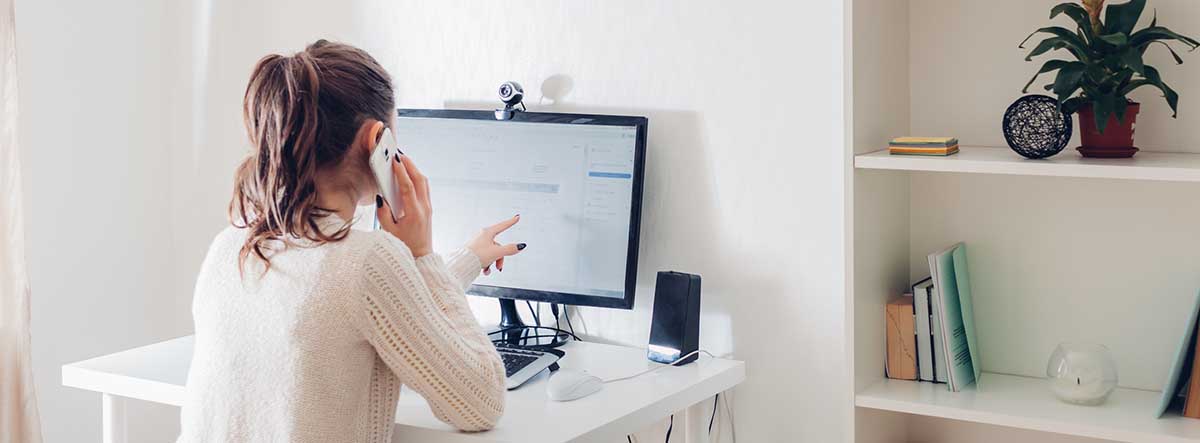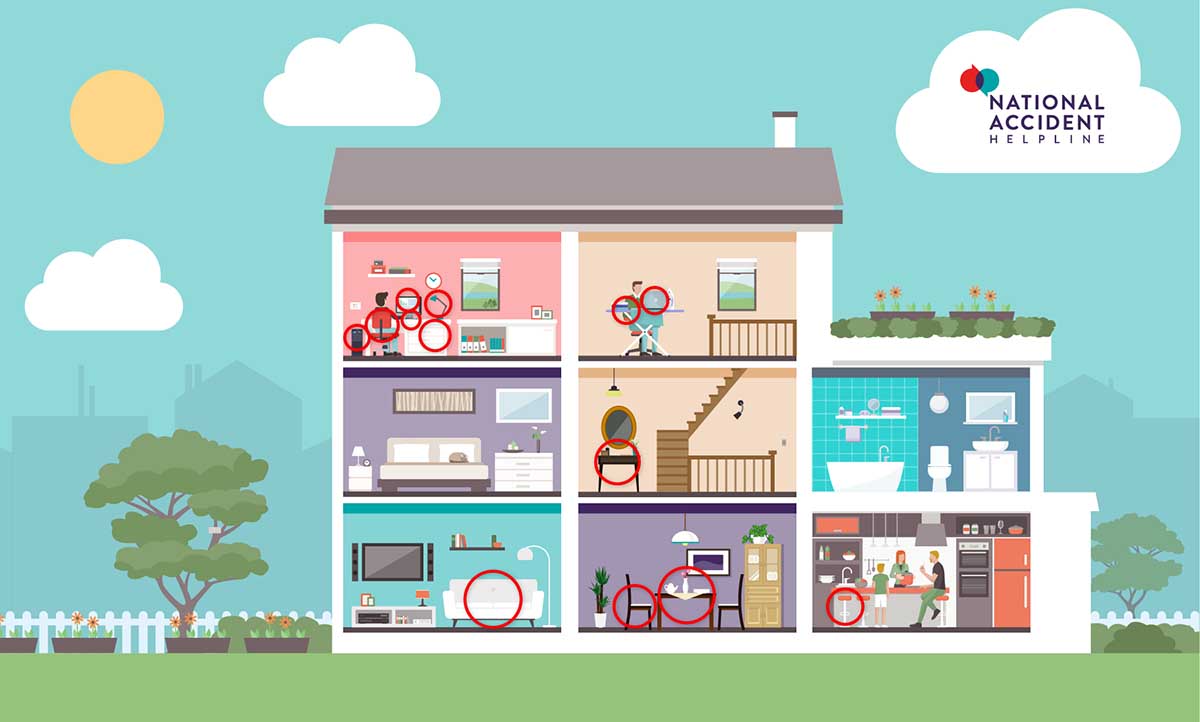
07 Jan, 2021/ by National Accident Helpline /Campaigns
So which are the most dangerous areas of the home to work in? We investigated.
The move towards the ‘new normal' way of working from home caught the vast majority of workers by surprise. While many businesses adapted quickly in moving to a homeworking model in response to the Covid 19 pandemic, it appears that employers and employees have not yet adjusted safely to the new working environment.
With Brits working from kitchens, bedrooms, and any other space they can find, we decided to survey 1,000 people who have been working from home to find out more about the issues that they have been facing during this time.
We found that many people lack a proper working space or suitable equipment in their home. As a result, almost half of those we spoke to (48%) have suffered an accident or injury whilst working from home.
To highlight the areas of risk to those working remotely, we have hidden 13 household items that have caused injuries to those working from home in the below image. Can you beat the average time of 45 seconds to spot all of the dangerous items?

Read on to find out more about the most accident-prone areas of the home or scroll to the bottom of the page to see if you correctly identified the items most likely to cause a working from home injury.
Location, Location, Location - Where are we working from?
All of our houses are different, and the layout of the room we work in plays a huge part in how safe and comfortable our working from home experience is. Whilst accidents at work are often the responsibility of the employer, workers have had to take personal responsibility to make sure that their home working space is safe to use.
Employers can assist with this by supplying remote workers with sufficient safety guidelines whilst working from home. However, 20% of those involved in the study had yet to receive any guidance from their employer. Over half (57%) had received risk assessment guidance from their employer which they had followed, whilst a worrying 23% had received the guidance but had not put it into practice.
Our research found that a third of home workers (36%) are working from their living room, the room that is used more commonly than any other. Almost 1 in 5 have a separate home office room to use (19%), making the current situation somewhat easier to adjust to.
Then, there are those of us that lack a suitable space to work from. Almost 1 in 5 (18%) are working from their bedroom, 14% are working from the dining room, 10% from the kitchen, and 4% from the hallway.
Back-breaking work - avoid the hallway!
The research indicates that the home working explosion and lack of understanding in how to safely set up a suitable homeworking station could be leading to an increase in specific ‘WFH injuries'. The most common WFH injury is back pain, with 1 in 4 home workers (27%) suffering. Other common ailments for home workers are eye strain (18%), neck pain (17%), and a repetitive strain injury (10%) caused by using items like a laptop or a mouse without following health and safety set up guidance.
Those working from their hallway were the most likely to suffer from a back injury, with almost half of those surveyed (46%) reporting at least one injury. In fact, 9 out of 10 (89%) of those working in the hallway reported an injury of some kind, higher than any other room.
Two thirds of those working in the bathroom (67%) reported at least one injury, whilst 1 in 10 working in the living room (9%) have had a slip, trip or fall - more than any other room.
Unsurprisingly, those with a dedicated home office have been best off, with 7 out of 10 people (70%) suffering no injuries whatsoever. Two-thirds (67%) of those working in the garden reported no injuries, compared to 55% of those working in the living room, and 53% of those working in the dining room. It appears that the room you work in does make a big difference after all.
Invest in a good chair!
We also questioned home workers on the household items that had contributed towards their injuries, and there was one clear takeaway point. A supportive chair is extremely important! Overall, over half of the injuries reported involved a chair in some way. 22% of injuries involved an ergonomic chair, whilst a further 32% involved a different type of chair.
Away from chairs, a quarter of the injuries reported involved an office desk (25%), with the sofa (25%), and dining table (21%) also frequently contributing towards injuries. Almost one in ten (8%) have suffered injuries due to using an ironing board used as a desk, suggesting that improvised office spaces are bad news in the long run.
Answers

Home Office (top left)
- Computer (desktop)
- Ergonomic Desk Chair
- Monitor
- Keyboard
- Desk Lamp
- Office Desk
Upper Hallway (top right)
- Laptop
- Ironing Board Used as a Des
Middle Hallway (middle)
- Table (other)
Living room (bottom left)
- Sofa
Dining Room (bottom middle)
- Dining Room Table
- Dining Room Chair
Kitchen (bottom right)
- Stool
In conclusion
None of us could have predicted that millions would be working from home for so long, or even that we would be entering 2021 in another national lockdown. However, there are steps that you can take to make sure that you are as protected as possible against accident and injury during this time. Your employer may provide you with items like a desktop monitor, desk or even a suitable chair upon request.
Even if no additional equipment is provided, all employers have a duty of care to ensure a suitable risk assessment has been conducted for any employee working from home on a long-term basis. Whilst there is still no requirement from the HSE to supply the same for those working from home temporarily, they do encourage employers to provide workers with advice on completing their own basic assessment at home.
As the nation edges closer to a full year of enforced home working, home working has become permanent in many cases. In these cases, employers are required to assess whether additional steps are required to avoid accidents and injuries. They should explain how to carry out full workstation assessments and provide workers with appropriate equipment and advice.
If you are one of the many that are continuing to work from home, be sure to follow safety guidelines, and to contact your employer if you are suffering from any issues.